 I’ve been tracking the release of The LOOP for some time and have been curious if its time-bending theme would integrate good with the mechanics.
I’ve been tracking the release of The LOOP for some time and have been curious if its time-bending theme would integrate good with the mechanics.
Wait… “good” isn’t the correct word there. Let me spend some green energy and activate a LOOP so I can try this again.
[Dramatic time-traveling music plays.]
I’ve been tracking the release of The LOOP for some time and was curious if its time-bending theme would integrate smoothly with the mechanics. The game’s look is also unique, featuring a palate of hues not often seen in board gaming.
Sorry. I feel like saying “hues” is a bit pretentious. Standby.
[Dramatic time-traveling music plays. Again.]
I’ve been tracking the release of The LOOP for some time and was curious if its time-bending theme would integrate smoothly with the mechanics. The game’s look is also unique, featuring a palate of colors not often seen in board gaming. Maxime Rambourg and Theo Riviere’s design is a mix of classic cooperative mechanics with some neat power combos and I, Chris Sacko, am here to tell you all about it.
Apologies, but I’ve misspelled my own name. Give me a second.
[Dramatic time-traveling music starts playing, but then stalls.]
It seems I’m out of green energy and therefore can’t travel back in time anymore. Probably shouldn’t have wasted a LOOP to swap “hues” for “colors.” Oh well. This is Chris Sacko and I’m about to review The LOOP and tell you its level of goodness.
Gameplay Overview:
The LOOP is a cooperative threat management game in which your team must stop the evil Dr. Faux before he permanently harms the structure of time. (And yes: technically the “LOOP” part of this game’s name is in all caps, so that’s how I’ll be referring to it. That’s what we here at Board Game Quest call “journalistic integrity.”)
The playing area for the LOOP is divided into seven eras. At the start of each turn, Dr. Faux will deploy randomly drawn clones to their designated starting era. These clones can only be destroyed if they’re moved into a different, but specific era.
Once the clones have been deployed, the active player will reveal a Dr. Faux card, which will reposition Dr. Faux’s Machine—the cube tower—and drop Rift cubes into it. The number of Rift cubes dropped is always at least two and increases with each clone present in the new era. There are only three spots in each time period for Rift cubes, however, and if ever a fourth cube will need to be added to an era it will cause a Vortex (that’s bad).
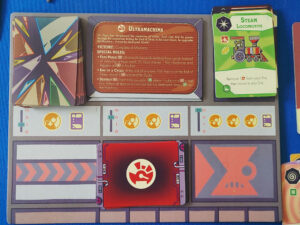
After Dr. Faux has done his evil stuff, the active player will take their turn. Player actions are fairly straightforward; players can move to adjacent eras and play cards from their hand in any order. Each player gets one free movement per turn while any other moves will require the use of one green Energy cube from the era they’re currently in.
But why is the game called The LOOP, you ask? Well, it’s because that’s the name of your team’s special power. At any point on their turn, players can perform a LOOP by spending green Energy in their current era. This allows that player to reset all cards of a single type in their hand and play them again.
(My wife refused to learn any of the actual terminology for this game, instead opting to call every action she took a “LOOP.” “I’m going to LOOP to this location,” she’d say, “then I’m going to LOOP to remove this cube, then I’m going to LOOP this thing to start a LOOP” and so on. It was very irritating. I’m glad I was able to share it with you.)
The only catch is that each time you LOOP it costs one more Energy than the previous time you LOOPed on that turn. This makes doing so continuously more difficult. (The most I was ever able to LOOP on a single turn was six times because I found myself creating a system where I could add green cubes back and forth between two eras. This isn’t meant to be bragging, but, you know, it also is.)
Along the edge of each of the seven time periods are mission tiles that are placed randomly at the start of the game. These missions involve completing various tasks such as destroying clones in specific eras or removing a certain number of Rift cubes. To win any game of The LOOP, the heroes must complete four of these missions.
Players lose the game if you go through Dr. Faux’s deck three times, a fourth Vortex is triggered, or a second Vortex would occur in a location that already has one.
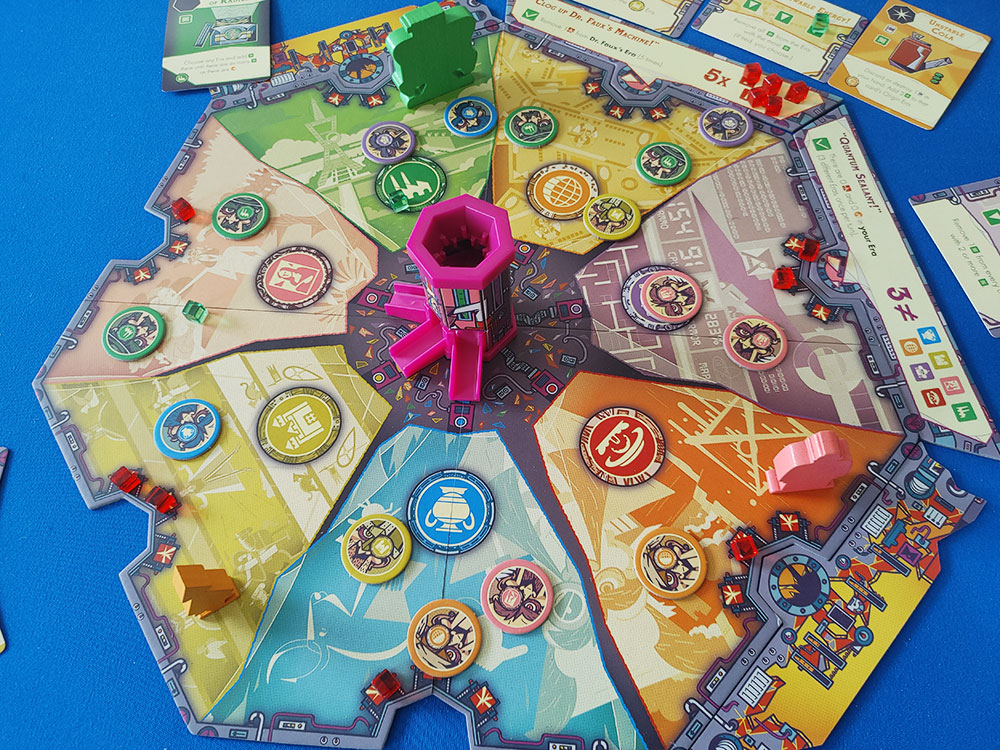
Game Experience:
At its core, The LOOP plays similarly to other threat management cooperative games. In it, there are multiple threats to manage like the clones, which not only need to be destroyed because of certain missions, but also because they increase the danger of adding cubes throughout the game. This makes it slightly more perilous than other “too many cube” cooperative games.
Another way this game differentiates itself is that there is intentional randomness built into the design. You put out the clones before determining where Dr. Faux will add the Rift cubes, so while you are able to deduce the probability that a certain location will have cubes added to it, the randomness of the clone positioning and cube tower distribution makes figuring out the exact path to victory nearly impossible from turn to turn.
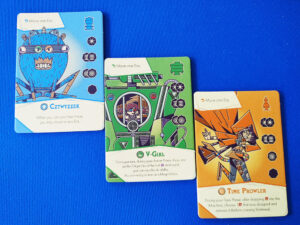
To some cooperative gamers this might actually be a flaw of The LOOP’s design since it does make understanding the information from turn to turn more difficult. Personally, I appreciated the concept but did find that because of the randomness there would be turns where a nearly completed mission would be destroyed through no fault of the players. The game is meant to be randomly challenging to a degree, which might immediately turn off some players.
In addition to the long-term planning issues, my plays of The LOOP also suffered from some pacing issues. The game’s most interesting mechanic is the ability to LOOP one’s turn over and over. That means that one person can have a really long, LOOPy turn, which will likely eat up all the cubes needed to LOOP so the next person might not have much of a turn at all. It’s cooperative so everyone’s invested on every turn, but it did create an imbalance in individual playtime.
The first thing most people will notice when eyeing The LOOP is its outrageous look. I don’t typically spend a lot of time on components and art style, but this is the type of game that could alienate players right from the start. For me, I found the artistic approach to be intriguing and one of the most appealing parts of the game. When the game is set up, it looks unlike anything else out there.
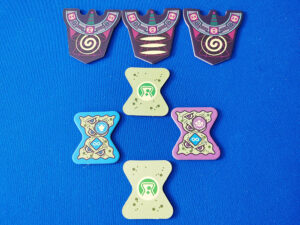
With a unique look comes unique problems, however, and one major one is the layout of the playing area itself. The way the mission tiles fit into the time periods around the board is pretty cool, but the very nature of their position means that half of the ones you need to read will be upside down to half of the people playing.
The artifact cards that are drawn during the game are also placed along their specific time period, which gives this game a larger footprint than you might think and further complicates the orientation issues that the mission tiles already have. These are relatively minor complaints, but I feel that they are worth mentioning as they did come up as issues during my plays.
Final Thoughts:
At first glance, The LOOP looks kind of like a goofy Pandemic clone with a cube tower gimmick. The reality is that the game is a lot more complicated than it looks. It’s difficult even on its easiest setting and each turn is a tricky puzzle about the right order to play your cards and when to trigger your special ability. Should you use the energy cubes to move or to LOOP? And what will that mean for later turns?
I had a lot of fun playing The LOOP, but I will add the qualifier that this is not a game you can just sit back and let happen to you. It’s not complex, but the game is too punishing to play casually, and you really need to focus on what options are available to you on every turn. That’s not really a criticism, but it is a fact and might seem counterintuitive given the game’s animated and outlandish art style.
Final Score: 4 Stars – The LOOP is a thinky and inventive cooperative game with clever mechanisms and a unique look.
 Hits:
Hits:
• LOOP mechanism is a lot of fun
• Every character plays differently
• Component quality and art style are great
• Four play modes help replayability
• Cube tower!
Misses:
• Board layout makes certain things difficult to read
• Inconsistent turn length
• Forces reviewers to awkwardly capitalize the word LOOP over and over








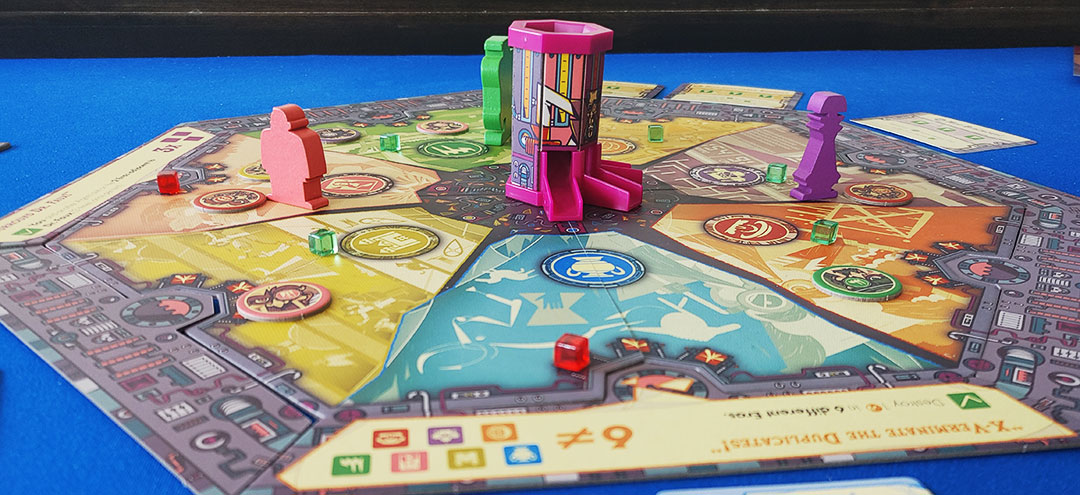

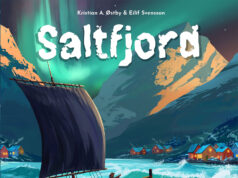
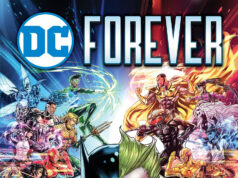












I just got this game for Christmas. it’s quite good and is not as complex as some similar co-op games I’ve played (looking at you, Spirit Island) which for me is a good thing. the main issue I have is that if it’s not your turn there is quite a lot of downtime as each player figures out how to counteract Dr. Faux (I have the French version where he’s called Dr. Foo). it’s not so bad with two players, but with four it can take twenty minutes. I also wish they’d included all seven playable characters in the main game (one for each historical era) instead of holding two back for the expansion.
the art style is one of the main reasons the game was chosen. it’s brilliant.
All very valid points. The flow of each player’s turn can indeed grind to a halt and also be shortened by the actions of teammates who are simply trying to maximize their own turns. As for including 7 characters in there I do think that would increase the cost of the base game quite significantly. There’s already a lot in there and I have to assume this was a consideration, as well as the potential increase of difficulty with additional characters.
Thanks for reading!